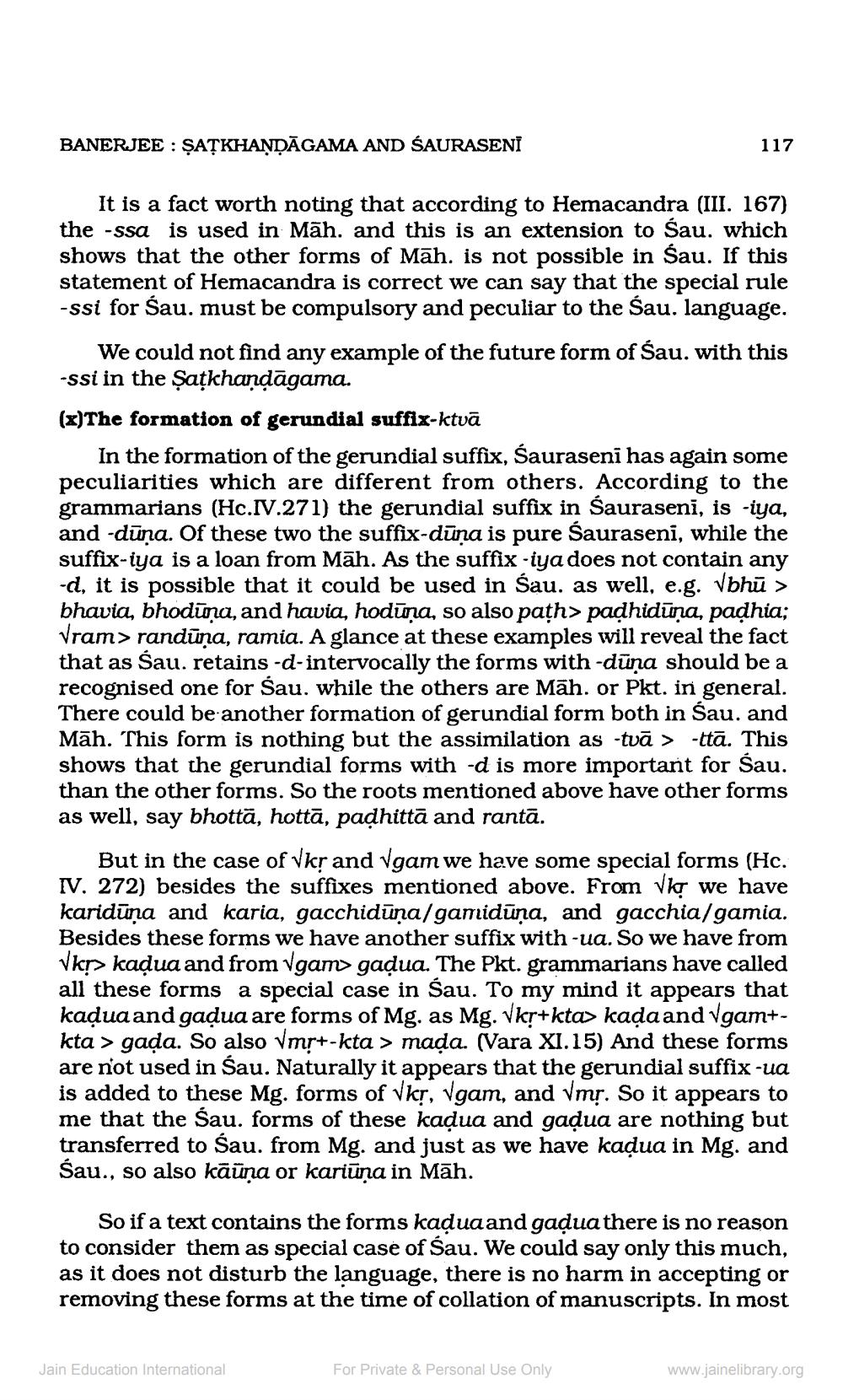________________
BANERJEE ȘATKHANDAGAMA AND SAURASENİ
It is a fact worth noting that according to Hemacandra (III. 167) the -ssa is used in Mah. and this is an extension to Śau. which shows that the other forms of Mah. is not possible in Sau. If this statement of Hemacandra is correct we can say that the special rule -ssi for Śau. must be compulsory and peculiar to the Sau. language.
117
We could not find any example of the future form of Śau. with this -ssi in the Satkhanḍāgama.
(x)The formation of gerundial suffix-ktvā
In the formation of the gerundial suffix, Śauraseni has again some peculiarities which are different from others. According to the grammarians (Hc.IV.271) the gerundial suffix in Śauraseni, is -iya, and -dūņa. Of these two the suffix-dūņa is pure Śauraseni, while the suffix-iya is a loan from Mah. As the suffix -iya does not contain any -d, it is possible that it could be used in Śau. as well, e.g. √bhū > bhavia, bhodūņa, and havia, hodina, so also path> paḍhidūņa, padhia; √ram> randūna, ramia. A glance at these examples will reveal the fact that as Śau. retains -d-intervocally the forms with -dūņa should be a recognised one for Śau. while the others are Mah. or Pkt. in general. There could be another formation of gerundial form both in Śau. and Mäh. This form is nothing but the assimilation as -tvā > -ttā. This shows that the gerundial forms with -d is more important for Śau.
than the other forms. So the roots mentioned above have other forms as well, say bhottä, hottā, paḍhitta and rantā.
But in the case of √kṛ and √gam we have some special forms (Hc. IV. 272) besides the suffixes mentioned above. From √k we have karidūņa and karia, gacchidūņa/gamidūņa, and gacchia/gamia. Besides these forms we have another suffix with -ua. So we have from
Vk kaḍua and from √gam> gaḍua. The Pkt. grammarians have called all these forms a special case in Śau. To my mind it appears that kaḍua and gaḍua are forms of Mg. as Mg. √kṛ+kta kaḍa and √gam+kta > gaḍa. So also √mr+-kta > maḍa. (Vara XI.15) And these forms are not used in Śau. Naturally it appears that the gerundial suffix -ua is added to these Mg. forms of √kr, Vgam, and √mr. So it appears to me that the Śau. forms of these kaḍua and gaḍua are nothing but transferred to Śau. from Mg. and just as we have kaḍua in Mg. and Śau., so also kāūņa or kariūna in Mah.
So if a text contains the forms kaḍua and gaḍua there is no reason to consider them as special case of Sau. We could say only this much, as it does not disturb the language, there is no harm in accepting or removing these forms at the time of collation of manuscripts. In most
Jain Education International
For Private & Personal Use Only
www.jainelibrary.org




